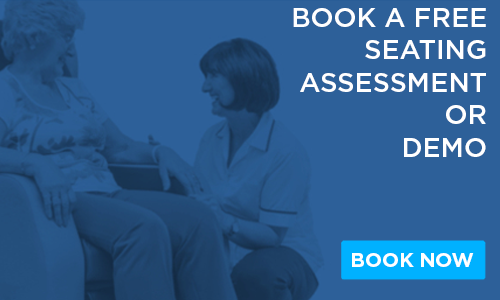This is partly the reason why I set up Seating Matters, as every day I could see the devastating negative effects on patients in hospitals and care homes who were sitting in bad chairs slouched over, in poor posture and leaning to one side or another. In these drastic sitting postures, their function was being greatly restricted and in some cases completely eliminated.
What is Function?
Function can be broken down into three areas:
Activity Related Functions
With good sitting posture and a stable base of support, a person should be able to increase their level of activity and therefore maintain their level of independence. Activity related functions include standing up from a seated position, reaching for a glass of water independently, reading a newspaper or feeding themselves.
Psychological Functions
We sit for many reasons – to talk, relax, work and watch T.V. There are many people who have postures which restrict them from completing these psychological functions reducing their social interaction, self image and quality of life.
Physiological Functions
Good sitting posture increases the ability of the body’s organs to work more efficiently and can facilitate physiological functions such as respiration, swallowing, digestion, elimination and circulation. Poor sitting posture can cause organ compaction and muscle contractions if a person is leaning to one side over a long period of time.
How Can We Improve Function in Seating?
Ensure the chair fits the patient. When a patient is stable and supported in their chair they can relax and their function and independence is maintained. When they feel unsafe, unstable or at risk of falling or sliding, they will use their trunk and limbs to help stabilise themselves in the chair, limiting their function. This feeling of being unsafe and insecure contributes to a pyschological impact where the patient feels fearful and scared.
A Seating Assessment with one of our Seating Specialists will ensure the medical condition and critical measures of the patient are recorded and evaluated. The Seating Specialist will trial the client in the recommended chair so you can instantly see the difference it can make. This will guarantee that the best chair is recommended to meet their long term needs.
Four Common Mistakes That Are Made in Seating
A chair which is too big for the patient. i.e. too wide, wrong seat depth, wrong seat height to suit the physical dimensions of the patient will have a detrimental effect on their sitting posture. This will have the knock on effect of limiting their functional ability.
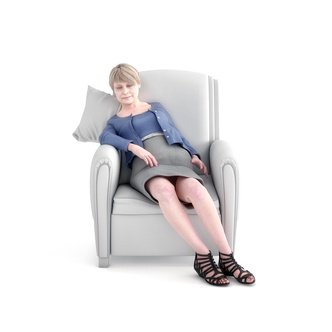
- When a chair is too wide a patient may feel unstable in the chair and may angle themselves in the chair to gain stability. They might position their pelvis and one side of their body to one side or one corner of the chair leaving the other side unsupported. This will also mean there will be an uneven distribution of body weight going through one side of the body increasing the chance of pressure injury risk. Often patients would use their arms to stablise themselves reducing the ability to use their arms for functional activity, such as feeding themselves or drinking independently. A chair with correct seat width will support and stabilise the pelvis providing a good base of support for the body, leaving the arms free for functional activity and interaction.
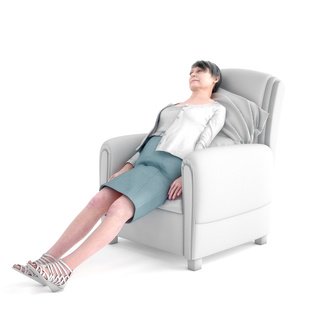
- When the seat depth on a chair is too long or the seat height too high, the patient can’t reach their ground with their feet. In order to feel grounded they may pull themselves forward in their chair increasing the risk of falls. This increases pressure ulcer risk on heels and feet and also puts more weight through the ITs. When the seat height is too low for the patient’s popliteal height height their femurs are not loaded on the seat, again increasing pressure on bony prominences. Pressure injuries are extremely debilitating as they cause immense pain. In cases where an elderly patient develops pressure injuries on their heels, its not uncommon that that person might have difficulty walking independently again. This will obviously have a huge negative impact on their psychological and activity related function, reducing the ability to complete independent stand transfers.
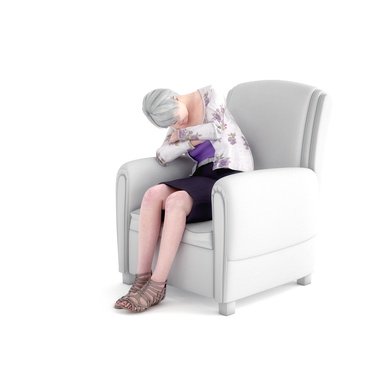
- When arm rests are the wrong height, or too far from the patients body to access, the patient will typically use their own arms to stabilise themselves, or ‘fix’ themselves in the chair. They do this to feel more secure, more comfortable and less at risk of falling out. This means they are unable to use their arms for functional activity related purpose such as eating, reading, changing the TV channel, all which negatively affect quality of life. When arm rests the the correct height, patients no longer need to use their arms to gain stability, freeing them up to use them for functional activity, which helps maintain their independence.
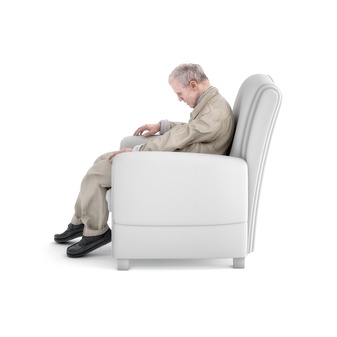
- Spinal deviations are not accommodated. such as kyphosis can limit functional ability greatly as the visual field is reduced by the ‘chin to chest’ position. With our Phoenix chair in particular we can uniquely accommodate and support a kyphosis and this coupled with tilt in space, allows the neck and shoulders to be comfortable. The tilt in space function allows the visual field to open right up, so instead of looking at the floor, the patient can see around them, make eye contact and this has a dramatic improvement on psychological function and communication. This also has positive knock on effects on physiological function improving the ability to eat, breathe, reducing risk of choking or aspiration.
Warning Signs to Watch out For
- Crossed arms – This indicates that the patient doesn’t feel stable, arms are being used for stability and therefore cannot be used for functional activity. Reaching out for a drink or a tissue is practically impossible. Using their arms to help them go from a sitting to standing position is also very unlikely. This means they lose their independence and need help and assistance with these simple tasks.
Possible chair problems: seat may be too wide, arms may be too high or too low.
- Leaning to the side – This indicates that they need lateral support as they have difficulty in maintaining mid line posture. Leaning to one side creates an uneven weight distribution which increases pressure injury risk which can in extreme cases, prove fatal.
Possible chair problems: seat width might be too wide, or they require more lateral support for their trunk/thoracic region, such as added laterals available to add onto the Phoenix and Sorrento chairs, or tilt in space.
- Slouching forward – This indicates that gravity is affecting their posture. This may become a bigger problem when the client is tired, as they might be working hard to keep all their muscles in their torso in mid line position so they can maintain an upright position. By tilting a patient back this slouching effect can be dramatically reduced, which means they can use their energy which they were using to maintain an upright position to carry out functional activities such as reading, playing, eating.
Possible chair problem: no tilt in space, no head and neck support for a patient with a curvature of the spine/kyphotic posture.
- Position of the feet – Our feet take 19% of our body weight and so should be fully loaded either on a footplate or on the floor if the patient is able to weight bear. Look out for dangling feet, knees bent on a calf pad with feet loaded on calf pad, or heels being ‘anchored’ on the floor. This could also be a sign of tight hamstrings which need to be accommodated in seating.
Possible chair problems: The seat height may be too high or depth too long so the patient seeks sensory feedback by ‘finding ground’ which may cause them to slide forward to reach the floor, or bend their knees to ground their feet on the calf pad. If feet are dangling the seat to floor height is too high, it should be reduced if the chair is adjustable, or if it has an adjustable height footplate it can help to load the feet.
What to Look for In Your Chair
- Tilt in Space
Tilt in space can help increase function in patients who have poor sitting posture and who are affected by gravity. Tilting them back whilst maintaining the angles in their hips, knees and feet creates a safe position, redistributing weight through their back and neutralising the effect of gravity, creating a comfortable, stable and functional position. The optimum angle for improving positioning and improving function is 15-30 degrees which comes as standard on our Phoenix and Sorrento chairs.
- Adjustability
Look for a chair that is multi adjustable; in particular seat height, seat depth, seat width, arm height. This is important for many reasons, as a patient’s needs might change over the course of their rehabilitation. They may gain weight, lose weight, suffer further postural deterioration and therefore may need additional postural support. Also for hospitals or care facility settings, an adjustable chair is important as it can be adapted to suit many different patients with different needs.
- Lateral Support
Posture can kill; it is so important to maintain a midline position for many health and functional reasons. Read more in our ‘Posture can Kill’ blog. The trunk and thoracic region can be further supported by the additional of lateral supports if required.
- Head and Shoulder Support
This is particularly important for those with a spinal presentation which affects their head control or a cognitive issue which prevents them from maintaining head control. By supporting head and shoulders, pyschological function such as communication, interaction and self image is improved, as well as physiological function such as eating, breathing, eliminating.
A footplate is vital to properly load the body in patients with low mobility. For patients who are still independent, they might be able to load their feet onto the floor. This manages pressure going through the body ensuring an even weight distribution as well as giving the patient that feeling of stability, making them feel safe and secure.
Stating your Case
If you are suggesting the person receives equipment you should build your case and justify your recommendation clearly and robustly. You should be clearly able to present your clinical reasoning identifying the problems and risks associated with their current equipment and their medical history. You should be well equipped with facts and figures to clearly justify the solution you are presenting. Clinical research and case studies help you do this with confidence.
At Seating Matters, we carried out a clinical research trial with Ulster University to investigate the effectiveness of specialist seating provision which uncovered many positive results. In terms of increasing function in participants, three key improvements were noted:
- 49% reduction in postural correction (repositioning) required. This had a positive effect on patient function as patients had better posture, therefore improved physiological, activity related and psychological functional ability. This also saved tremendous time and cost to the staff and care facility.
- Pain/Discomfort levels were reduced by 40%. Less pain medication was administered and this had the knock on effect of increasing patient quality of life and function.
- 13% reduction in time spent on bed rest. Prolonged bed rest has a severe impact on function and overall health. When we are able to reduce bed rest we are improving all functional related activities.
We Are Here to Help
I have personally trained all the Seating Specialists at Seating Matters, who can provide a free Seating Assessment for your patient or loved one. We strongly encourage you to avail of this free, no obligation service, and discover the difference that correctly prescribed seating can make to a loved one’s life.
Book a free Seating Assessment today.
Alternatively if you have any questions or queries about seating please contact your local office and our internal Seating Specialists will be happy to answer your questions.
** This post was originally published on http://blog.seatingmatters.com/how-seating-improves-function


